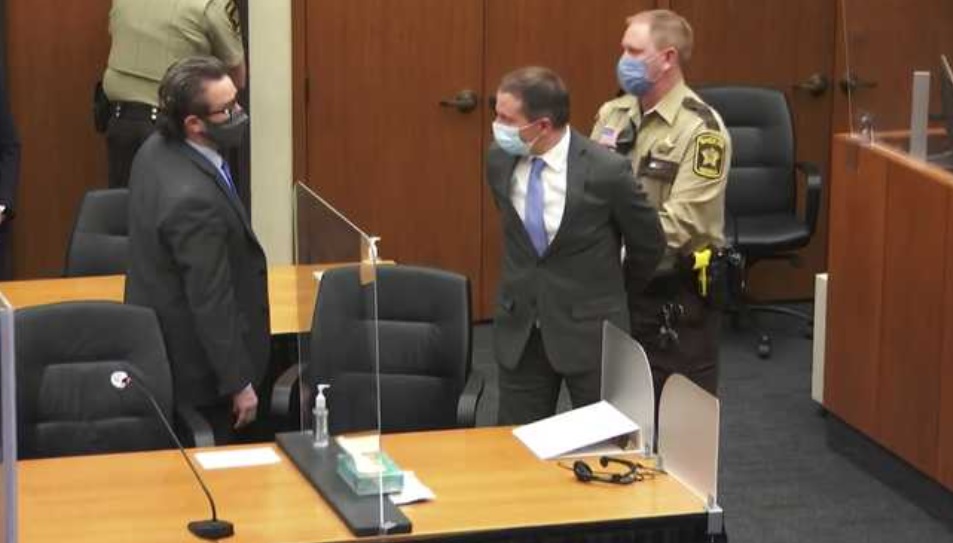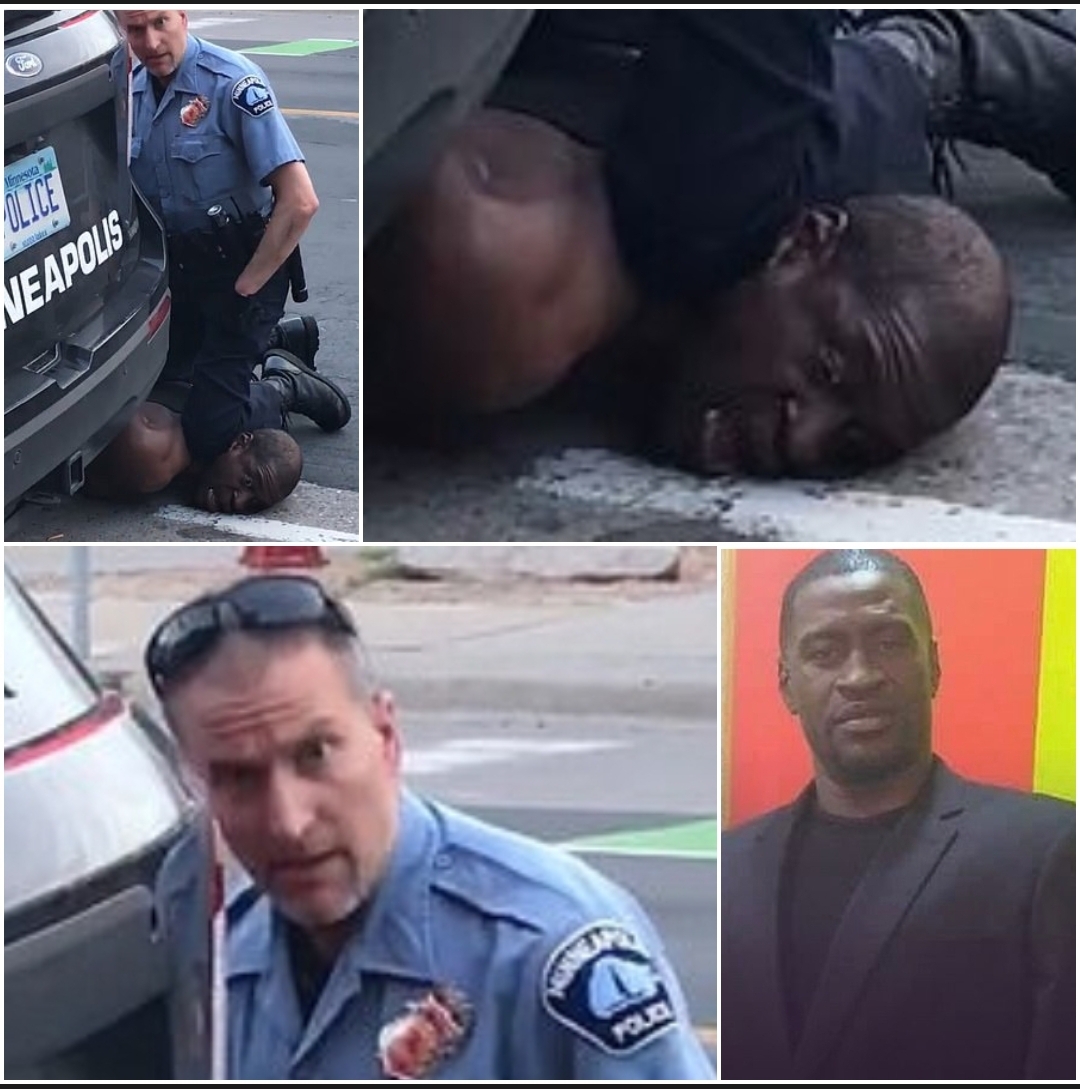Minneapolis – Yesterday, former Minneapolis Officer Derek Chauvin was convicted Tuesday of murder and manslaughter for pinning George Floyd to the pavement with his knee on the Black man’s neck in a case that touched off worldwide protests, violence and a furious reexamination of racism and policing in the U.S.
Chauvin, 45, could be sent to prison for decades.
Advertisement
The jury of six white people and six Black or multiracial ones came back with its verdict after about 10 hours of deliberations over two days. Chauvin was found guilty on all charges: second-degree unintentional murder, third-degree murder and second-degree manslaughter.
His face was obscured by a COVID-19 mask, and little reaction could be seen beyond his eyes darting around the courtroom.
Advertisement
His bail was immediately revoked and he was led away with his hands cuffed behind his back.
The verdict was read in a courthouse ringed with concrete barriers and razor wire and patrolled by National Guard troops, in a city on edge against another round of unrest — not just because of the Chauvin case but because of the deadly police shooting of a young Black man, Daunte Wright, in a Minneapolis suburb April 11.
The jurors’ identities were kept secret and will not be released until the judge decides it is safe to do so. ‘We can’t stop here,’ President Biden says in first remarks since Chauvin conviction
Three other former Minneapolis officers charged with aiding and abetting murder in Floyd’s death will stand trial in August.
Floyd, 46, died May 25 after being arrested on suspicion of passing a counterfeit $20 bill for a pack of cigarettes at a corner market. He panicked, pleaded that he was claustrophobic and struggled with police when they tried to put him in a squad car. They put him on the ground instead.
The centerpiece of the case was the excruciating bystander video of Floyd gasping repeatedly, “I can’t breathe” and onlookers yelling at Chauvin to stop as the officer pressed his knee on or close to Floyd’s neck for what authorities say was 9 1/2 minutes. Floyd slowly went silent and limp.

Prosecutors played the footage at the earliest opportunity, during opening statements, with Jerry Blackwell telling the jury: “Believe your eyes.” And it was shown over and over, analyzed one frame at a time by witnesses on both sides. Lack of oxygen killed George Floyd, not drugs or bad heart, expert says.
In the wake of Floyd’s death, demonstrations and scattered violence broke out in Minneapolis, around the country and beyond. The furor also led to the removal of Confederate statues and other offensive symbols such as Aunt Jemima.
In the months that followed, numerous states and cities restricted the use of force by police, revamped disciplinary systems or subjected police departments to closer oversight.
The “Blue Wall of Silence” that often protects police accused of wrongdoing crumbled after Floyd’s death: The Minneapolis police chief quickly called it “murder” and fired all four officers, and the city reached a staggering $27 million settlement with Floyd’s family as jury selection was underway.
Police-procedure experts and law enforcement veterans inside and outside the Minneapolis department, including the chief, testified for the prosecution that Chauvin used excessive force and went against his training.
Medical experts for the prosecution said Floyd died of asphyxia, or lack of oxygen, because his breathing was constricted by the way he was held down on his stomach, his hands cuffed behind him, a knee on his neck and his face jammed against the ground.
Chauvin attorney Eric Nelson called a police use-of-force expert and a forensic pathologist to help make the case that Chauvin acted reasonably against a struggling suspect and that Floyd died because of an underlying heart condition and his illegal drug use.
Floyd had high blood pressure, an enlarged heart and narrowed arteries, and fentanyl and methamphetamine were found in his system.
Under the law, police have certain leeway to use force and are judged according to whether their actions were “reasonable” under the circumstances.
The defense also tried to make the case that Chauvin and the other officers were hindered in their duties by what they perceived as a growing, hostile crowd.
The prosecution’s case also included tearful testimony from onlookers who said the police kept them back when they protested what was happening. Eighteen-year-old Darnella Frazier, who shot the crucial video, said Chauvin just gave the bystanders a “cold” and “heartless” stare.
She and others said they felt a sense of helplessness and lingering guilt from witnessing Floyd’s slow-motion death.
To make Floyd more than a crime statistic in the eyes of the jury, the prosecution called to the stand his girlfriend, who told the story of how they met and how they struggled with addiction to opioids, and his younger brother Philonise. He recalled how Floyd helped teach him to catch a football and made “the best banana mayonnaise sandwiches.”

COMMENTS